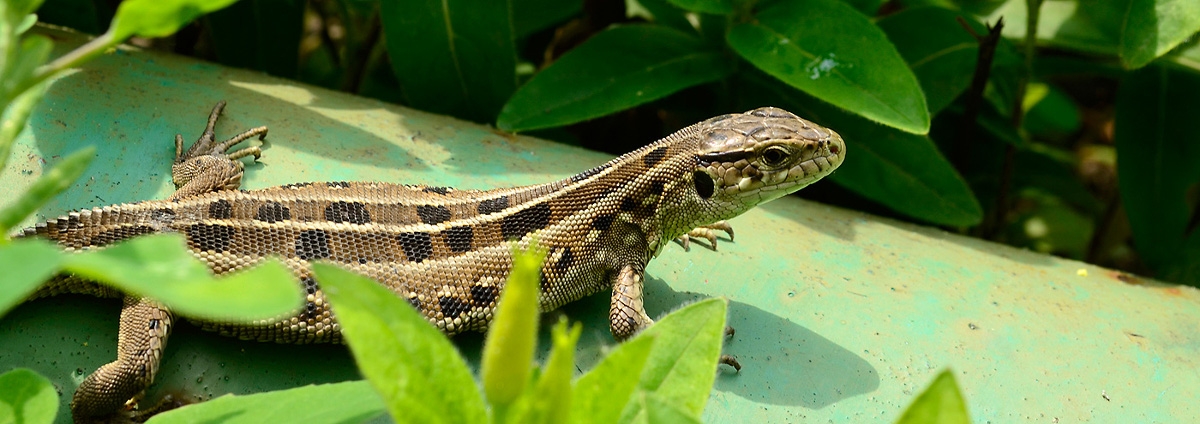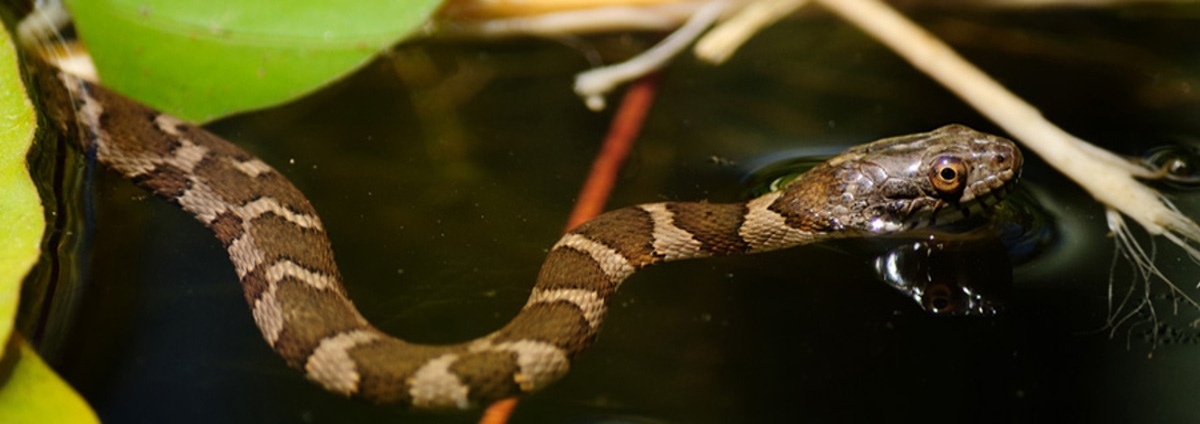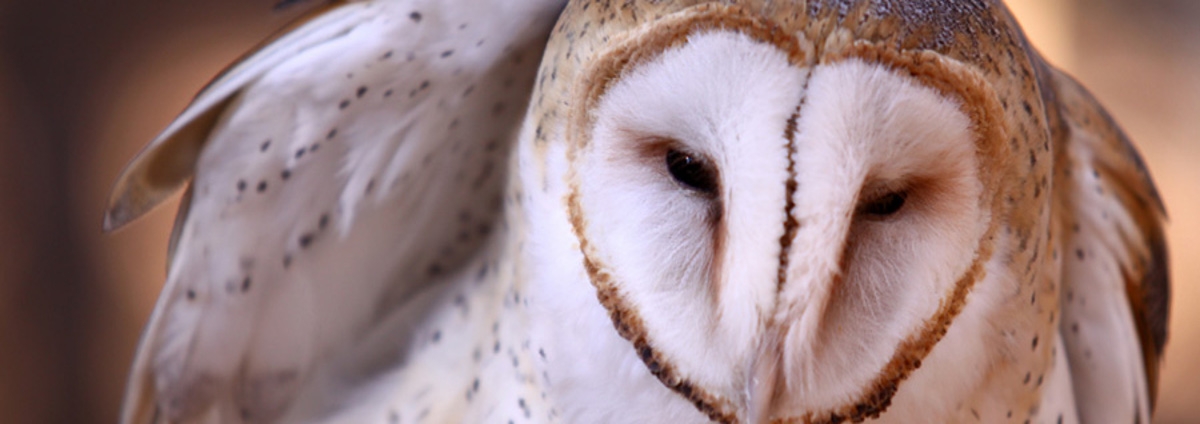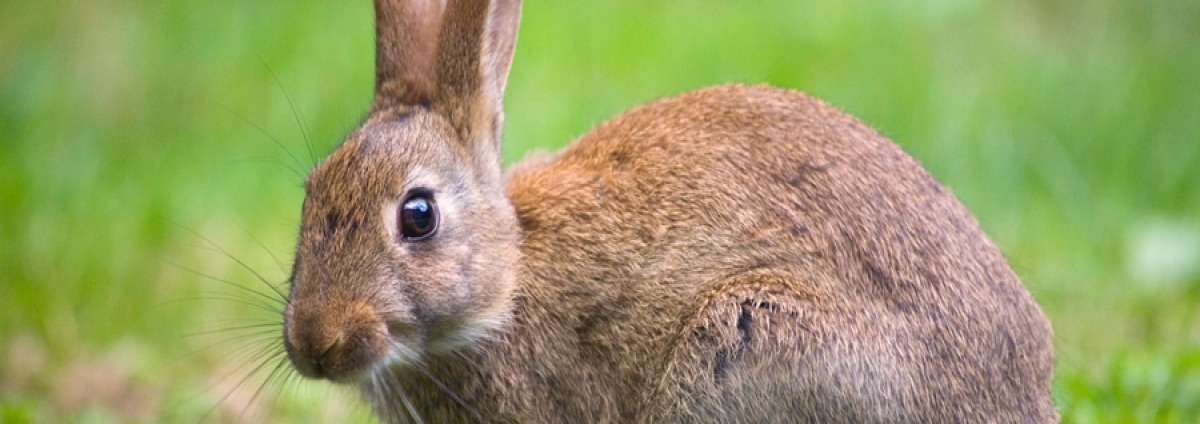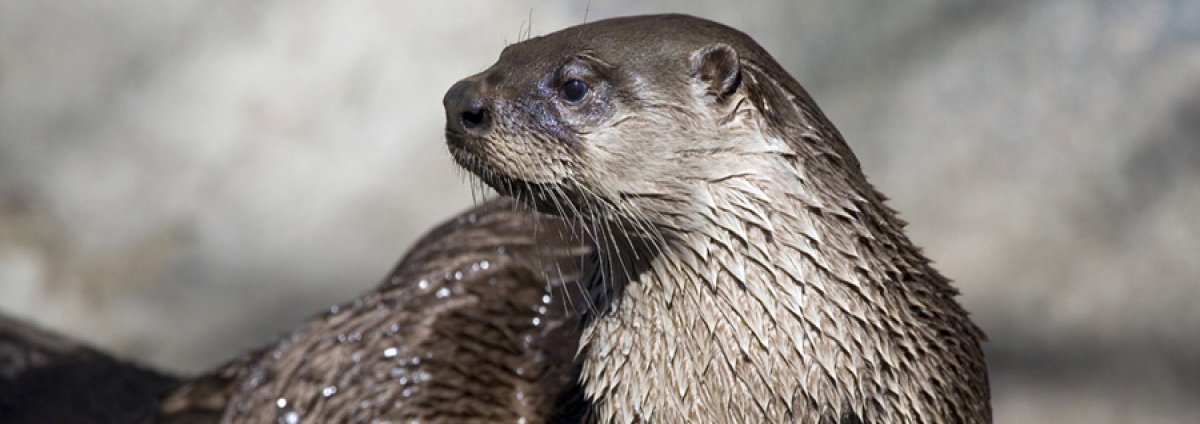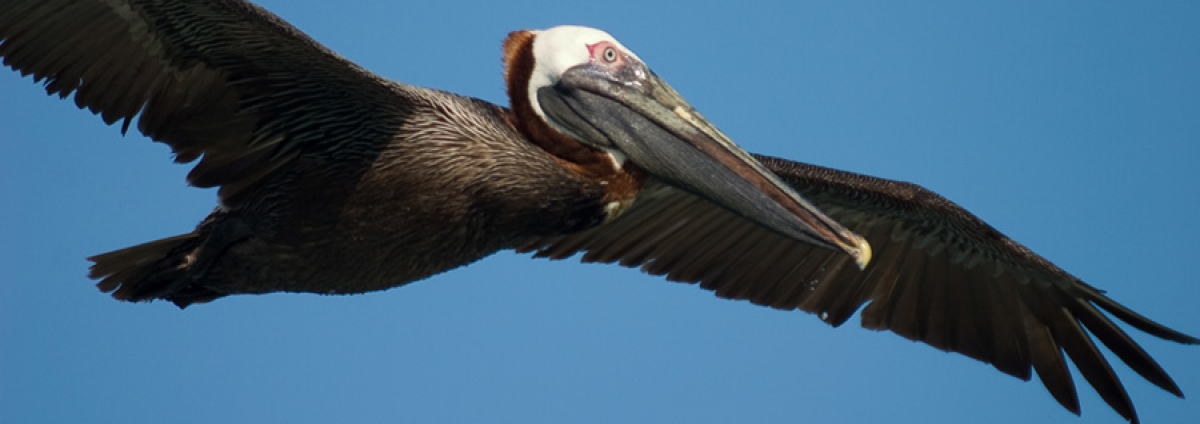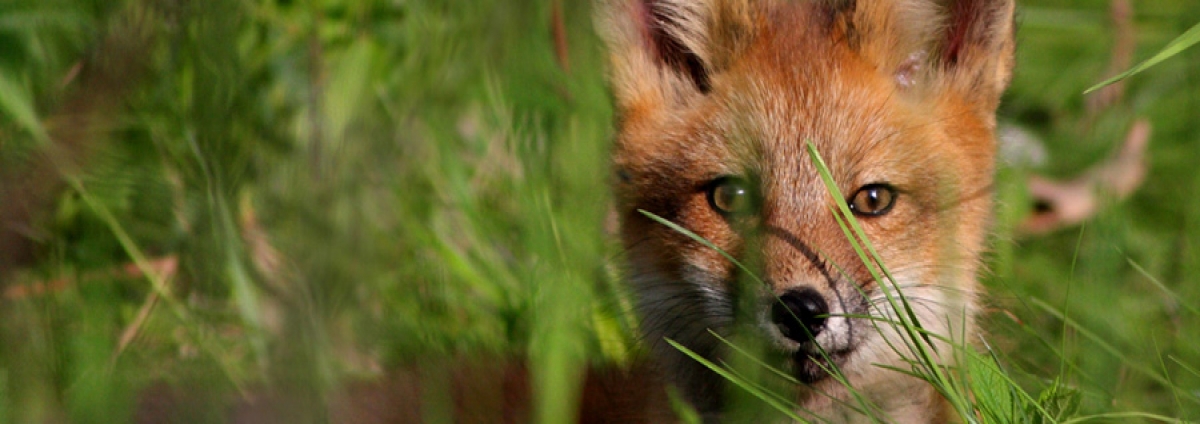Wildlife Response, Inc. is a distinctive 501c3 volunteer organization devoted solely to the care of orphaned, injured, and displaced native wildlife. We are dedicated to increasing awareness of wildlife rehabilitation to the public. Our organization depends primarily upon the private donations for its programs and services.
The Wildlife Response and Rehabilitation Center will be a centrally located facility where citizens, animal control officers and other agencies can drop off wildlife. In addition, the Center will provide a redistribution center for animals to be triaged, and then sent to permitted-based wildlife rehabilitators for care. The Center is expected to open in 2018.
Mammals
Gray Squirrel
Sciurus Carolineses
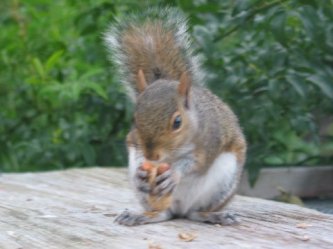 Squirrels evolved between fifty- four and fifty- seven million years ago. The name “sciurus” is derived from a Greek word meaning “shade Tail”. They are a member of the rodent family of mammals. The word rodent is derived from the Latin word “rodere”, meaning “to gnaw”. During the micene era the ancestor of the squirrel evolved. Roughly 25 million years ago, squirrels diversified into tree and ground dwelling species. The specific origin of the gray squirrel is unknown. The fossilized predecestors of squirrels are classified as “paramyids”, the earliest form of rodent. This species varied in size from a few inches to beaver sized. Modern beavers are thought to be the nearest living relative to these primitive mammals.
Squirrels evolved between fifty- four and fifty- seven million years ago. The name “sciurus” is derived from a Greek word meaning “shade Tail”. They are a member of the rodent family of mammals. The word rodent is derived from the Latin word “rodere”, meaning “to gnaw”. During the micene era the ancestor of the squirrel evolved. Roughly 25 million years ago, squirrels diversified into tree and ground dwelling species. The specific origin of the gray squirrel is unknown. The fossilized predecestors of squirrels are classified as “paramyids”, the earliest form of rodent. This species varied in size from a few inches to beaver sized. Modern beavers are thought to be the nearest living relative to these primitive mammals.
Almost every activity of the modern gray squirrel involves food. Adult gray squirrels consume roughly one and a half pounds of nuts and seeds a week. Natural foods include a variety of seeds, nuts, fruit, buds, leaves, bark, and fungi. Favorite nuts include hickory, pecan, black walnut and acorns. Favorite seeds include pine, corn, black gum fruits, sugar maple, dogwood fruits, wild cherry and beechnut. Gray squirrels will eat between 30 and 60 different plants. They are omnivores. They will occasionally eat bird eggs, earthworms and beetles. They will also eat soil to obtain minerals. They will strip bark on a tree to sharpen their teeth and obtain nutrients from the sappy tissue beneath the bark. Their diet may also include mushrooms , the bones of dead animals and deer antlers. They require water at least twice a day. In winter, they will eat the snow to obtain water. Gray squirrels are scatter hoarders. They bury small amounts of food in different locations. They are capable of burying 25 nuts per hour. Experiments have shown that they use their highly developed sense of smell to locate their buried treasures. In spring, swelling buds and the flowers of the red and sugar maple are eaten. Summer food will include berries, apples, corn and other grains.
Squirrels are most active at dawn and in the late afternoon. Wind discourages movement. Squirrels are somewhat gregarious, tolerating each other in small groups when food is plentiful. Squirrels are active year round. They may stay in their den for several days during storms or severe winter weather. In winter, several immature squirrels may share the same nest.
Squirrels use two kinds of nests: tree dens and leaf nests called dreys. Leaf nests are usually summer nests. They will be built in the top fork of a tree or in the crotch of a limb neat the trunk. A single entrance usually faces the main trunk or a nearby limb. The number of active nests per squirrel is thought to be about three, depending on the density of squirrels in the area. Nest sites are periodically changed to keep parasites under control. Most squirrels are capable of constructing a nest in one day. Additional material is added from time to time. The diameter of the interior nest is usually 6 to 8 inches.
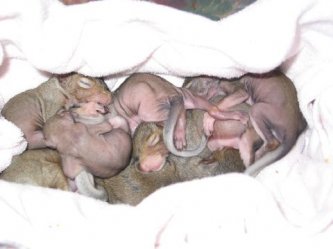 Gray squirrels have two litters a year. The first is early spring and the second is in the fall. The litter usually consists of 3 to 5 babies. They are born pink, blind and hairless. The first hair to develop is the whiskers. Squirrels grow slowly. They are dependent on their mother for six weeks. They open their eyes around 5 weeks and have their front incisors, but will not have their grinding teeth until around the sixth week. They may continue to nurse until the 12th week. The first litter will venture from the nest around the first week of May. The second litter will become active in August. Almost as soon as young squirrels leave the nest, they begin to bury nuts. Squirrel mothers are extremely protective of their young. They do not mate for life like their cousin the beaver. Young squirrels are not automatically accepted in a territory. They must establish their position. Squirrel home ranges vary from one to seven acres. Males have a larger territory than females. They will travel in rows of trees which they have marked with scent. Squirrels are quick and nimble. They are capable of running, climbing and jumping among the branches of the highest trees. They have extremely powerful back legs and can easily jump 6 feet. They are capable of climbing almost every surface with the exception of glass. They are capable of running 19 miles per hour. They are also able to swim up to one mile.
Gray squirrels have two litters a year. The first is early spring and the second is in the fall. The litter usually consists of 3 to 5 babies. They are born pink, blind and hairless. The first hair to develop is the whiskers. Squirrels grow slowly. They are dependent on their mother for six weeks. They open their eyes around 5 weeks and have their front incisors, but will not have their grinding teeth until around the sixth week. They may continue to nurse until the 12th week. The first litter will venture from the nest around the first week of May. The second litter will become active in August. Almost as soon as young squirrels leave the nest, they begin to bury nuts. Squirrel mothers are extremely protective of their young. They do not mate for life like their cousin the beaver. Young squirrels are not automatically accepted in a territory. They must establish their position. Squirrel home ranges vary from one to seven acres. Males have a larger territory than females. They will travel in rows of trees which they have marked with scent. Squirrels are quick and nimble. They are capable of running, climbing and jumping among the branches of the highest trees. They have extremely powerful back legs and can easily jump 6 feet. They are capable of climbing almost every surface with the exception of glass. They are capable of running 19 miles per hour. They are also able to swim up to one mile.
The life expectancy of a gray squirrel is 10 years but the average life span is 18 months. An old squirrel would be 4 years old. An estimated 15 to 25 percent of young squirrels survive their first year. After the first year there is a 50 to 70 percent survival rate. About 1 percent of squirrels in a given year will survive longer than 5 years.
Natural predators include man, hawks, owls, fox, bobcats and raccoons. The greatest cause of death for squirrels is due to a combination of lack of food, secondary infection from parasites and effects of cold weather.
Squirrel language includes a vocabulary of slow warning barks, scolding, teasing and playful “clucks”. When alarmed, jerky tail movements will accompany its call. Squirrels use their calls and tail movements to warn other squirrels of danger, as well as, to intimidate their adversaries. The tail is also used for shade in the summer and a blanket in winter. The tail is used for balance when climbing and jumping.
A gray squirrel’s teeth are its most important tool. Their sharp incisors enable them to gnaw through the outside of nuts, as well as wood and plastic. The incisors will grow about 6 inches in a year and must be constantly worn down by eating or chewing.
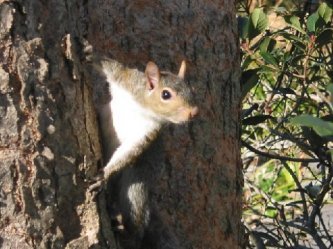 Squirrels have very acute senses. Their hearing enables them to be aware of any changes in their environment. They have powerful vision and a wide field of vision due to the placement of their eyes on the side of the head. It is believed they are able to distinguish color, with the exception of red and green. They are able to see fine detail in vertical objects. It is believed that a gray squirrel is able to recognize another at 50 feet away. They are able to see object movement twice as fast as the human eye.
Squirrels have very acute senses. Their hearing enables them to be aware of any changes in their environment. They have powerful vision and a wide field of vision due to the placement of their eyes on the side of the head. It is believed they are able to distinguish color, with the exception of red and green. They are able to see fine detail in vertical objects. It is believed that a gray squirrel is able to recognize another at 50 feet away. They are able to see object movement twice as fast as the human eye.
The squirrel’s fur is its first defense against the cold. It is a mixture of brown, grey and yellow on top with gray and white underneath. The range of fur color may run from gray to silver-gray to black. Extra sensitive hairs called “vibrissae” form the whiskers. The whiskers give them accurate information on the size of an opening they wish to enter. Baby squirrels are born with these facial hairs, which help them find their mother in the nest. The underneath coloring pattern of the tail can provide information on the age of a squirrel. In gray squirrels, juvenile tails have a stripe pattern to the fur. Squirrels that are 16 months and older do not have the striped variation in their tail fur.(reprinted with permission from Wild at Heart)
Foxes of North America
The Red Fox (vulpes fulva)
The Gray Fox (urocuon ceneroargenteus)
The Arctic Fox (alopex lagopus)
The Kit Fox (vulpes velox)
There are four types of foxes in North America- the red, the gray, the arctic and the kit. Many of their characteristics are the same, but each has its own interesting differences. The fox is the smallest of the wild dogs of North America. It is one of the most intelligent of the wild animals and is very adaptable.
The most significant feature of a fox is its “brush” or tail, which is extremely important in cold weather. The fox will curl up tightly and cover the nose, paws and legs with the tail. The tail also plays a significant role in fox language to convey messages of dominance, submissiveness, aggression and playfulness. The tail is a third of the fox’s body length. Only the red fox has the white tip.
All foxes have oval- shaped eyes, which differs from the other members of the dog family, which have round eyes. The red fox has vertical pupils that can narrow to a slit, thus reducing the amount of bright sunlight. They also have a reflective membrane which causes the light to pass over the retina twice, greatly improving night vision.
The fox’s vibrissae (whiskers) are cat-like. They are longer than their wild dog cousins. A fox has a well developed sense of hearing. It can easily hear a mouse rustling under 2 feet of snow or grassy area.
Foxes are capable of leaping 15 feet or more.
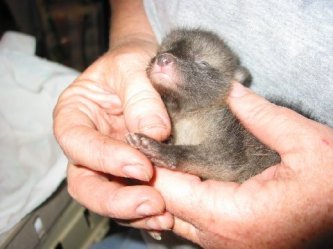 Foxes are quick learners and have been known to follow farmers mowers at haying time. They will snap up mice and voles injured or exposed by the haying process. Foxes are preeminent mousers without the aid of the farmer. They will also consume moles and voles. A fox’s wild diet includes grasshoppers, crickets, small birds, squirrels, rabbits, young woodchucks, snakes and lizards. They will occasionally take larger birds, such as pheasants and ducks. They also eat berries and fruit, such as grapes, apples and raspberries. They will eat about 1 pound of meat at a time. Red fox will bury or cache abundant prey in the summer and dig it up when food is scarce.
Foxes are quick learners and have been known to follow farmers mowers at haying time. They will snap up mice and voles injured or exposed by the haying process. Foxes are preeminent mousers without the aid of the farmer. They will also consume moles and voles. A fox’s wild diet includes grasshoppers, crickets, small birds, squirrels, rabbits, young woodchucks, snakes and lizards. They will occasionally take larger birds, such as pheasants and ducks. They also eat berries and fruit, such as grapes, apples and raspberries. They will eat about 1 pound of meat at a time. Red fox will bury or cache abundant prey in the summer and dig it up when food is scarce.
Foxes have numerous cries, calls and sounds. They do not howl like their wolf cousins. They do have a shrill alarm bark used to warn kits of danger when they are old enough to leave the den.
Foxes are sexually mature by the age of one. Late January is the typical mating season. The gray fox mating ritual is more aggressive than that of the red. Fox mating rituals involve an extended period of chasing that may last up to two weeks. During this time the fox will urinate a strong skunk-like odor. The male and female will separate for a time after mating. The vixen( female) will seek a den just before time for birthing.
A den site can often be detected by worn trails leading to it or by left over bones, feathers, etc. may be spotted. Red foxes prefer making their dens in an environment that allows easy digging. They will also enlarge an existing den of a woodchuck, skunk or another fox. Gray fox will use a ground den but prefer a hollow log or a hollow tree. The gray fox is not tidy about its den area, so you will more likely find bones from fish, birds or rabbits near the den site of the gray fox.
The dog fox ( male) will join the vixen to raise the kits. Kits are usually born in March or April. The typical litter size for all fox species will be 4 kits.
After the vixen gives birth, she will remain in the den for several days. The male will bring food to her during this time. The kit’s eyes do not open for ten days. At the age of 3 to 4 weeks, kits remain near the den opening. At 4 weeks, the kits will begin to fight each other. This is a means of establishing a dominance hierarchy, which determines which kit is fed first by the parents. If food becomes scarce, the dominant kits may be the only ones to survive. Fox kits are vulnerable to a number of predators including eagles, hawks, owls, coyotes and man. At approximately 8 weeks of age, the vixen will force the kits to stop nursing. Around the age of nine weeks,in early fall, young fox are able to feed themselves. They will begin to disperse in the fall after 10 weeks of age.
Foxes are highly territorial. The resident dog fox or vixen will savagely attack an intruder.
The average life span of a wild fox is 5 years. An adult fox’s small size makes it prey for wild cats, coyotes and wolves. Foxes are also affected by rabies, distemper and mange.
The Red Fox is found in every state with the exception of Florida. It is found across Canada to the arctic tundra. It can be found in mountains, forests and farmlands.
Legends about the red fox are many. Some American Indians considered the clever red fox the devil on earth.
The red fox is one of nature’s loveliest and most elegant creatures. The scientific name “vulpes” is the Latin word for fox. The classification “fulva” is from the Latin meaning of reddish- yellowish. It is sometimes called the cat-like fox.
Red fox fossils in North America have been dated back to sometime before the arrival of Columbus.
The red fox stands about 15 inches at the shoulder and weighs between 8 and 14 pounds. Red foxes are not always red. The “silver fox” is the black phase of the red and the “cross fox” is a red fox with dark fur in the shape of a cross down the back and across the shoulders.
Red foxes are stealth hunters. Both the red and gray fox will hunt during the day if they feel secure and have ample hiding places. Reds hunt in the same manner as a small cat. When possible, they will stalk their prey and either pounce on it or run it down with a quick burst of speed. Red foxes are solitary hunters. The red can partially retract its claws, which permits it to stalk quietly, helps the claws stay sharper ,which aids in pinning the prey. Red foxes will prey on anything they can catch and kill.
If chased, a red fox will leap a distance or travel down a stream to put distance between its foot track. They are capable of running 30 miles per hour for several miles, leap obstacles up to six feet in height and easily swim across rivers and streams.
The Gray Fox has a similar range to the red. Its genus name is”urocyon cineroargenteus”. The gray fox tends to avoid areas that have very cold weather. It will inhabit areas of habitat that the red fox avoids. It prefers wooded areas and is not found in the plains states or the western mountain states of the U.S. Sometimes called the “tree fox”, the gray fox will climb up a leaning tree to take a nap in the lower branches. Grays have been seen eating eggs or young nestlings out of their nests. Gray foxes will also climb a tree to escape predators. They will climb on to a leafy branch and flatten themselves to avoid detection. The gray fox is less likely to live near humans. It is also less likely to be seen, as it prefers to move about at night.
The fur of a gray fox is usually a silvery gray but may have also have markings of black, orange and white. The underside will usually be white or light gray. The gray’s tail will be tipped in gray or black. The gray fox weighs less than the red but its body is longer. They typically stand 15 inches at the shoulder and will weigh between 7 and 11 pounds.
The gray fox is the best fighter in the fox clan. A gray fox will stand up to a single dog and easily drive it away.
The Kit Fox (vulpes velox) is the smallest of the North American foxes. It is found in the desert and plains areas of the United States. Its range in the U.S. is limited. It prefers dry, brushy areas. It is sometimes called the “swift fox” due to its habit of darting after things and the speed at which it does this.
The kit fox’s fur is yellowish gray with light colored underbelly. The tail is tipped in black. The adult weight ranges between 4 and 6 pounds and it stands 12 inches at the shoulder. The kit fox family life differs from his cousins as the off-spring remain with the parents for one year before dispersing on their own.
The kit fox prefers a nocturnal life. It spends the day in a burrow and always digs a second entrance for escape. Most foxes will run if surprised, but the kit fox will freeze and lay close to the ground.
A kit fox’s diet will include ground squirrels, prairie dogs, rabbits, snakes, lizards, small birds and insects. It will eat grass and berries if meat is not available.
The kit fox has the longest ears of the foxes and its vocalizations are more like the “chatter” of squirrels than the yelping and yapping of the other fox clan members. The kit fox does not tolerate human presence and requires a desert habitat to survive.
The Arctic Fox (alopex lagopus) looks least like its cousins. It has a shorter nose, short rounded ears, stands less than 12 inches at the shoulder and is the heaviest of the foxes, weighing in at 15 pounds.
Another unusual trait is that it changes its fur color with the seasons. Summer will find it in the brown phase and white during the winter.
It tolerates people more than the other species and will follow hunters and trappers in hopes of an easy meal. Winter feeding for the arctic fox is usually leftovers from a larger animal’s kill or a whale that has beached itself. In summer, its diet includes lemmings and other rodents, ptarmigan, as well as other bird’s eggs.
Their fur is the softest in the fox family. Young are raised in hillside dens in spring in a similar fashion to its fox cousins. By fall, as with other foxes, the young are able to care for themselves.(reprinted with permission from Wild at Heart)
Eastern Cottontail
(Silvilagus Floridanus)
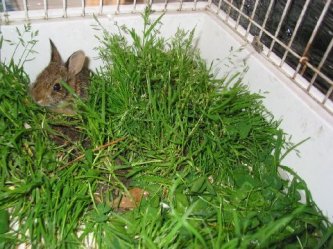 The eastern cottontail is the most widely spread species in the United States. They are found everywhere east of the Rocky Mountains. The word “sylvilagus means “wood hare”. Their range extends from Canada to Central America. Cottontails are found in diverse habitats, including woodlands, fields, swamps, farmlands, hedge, prairies and urban yards. In Native American Indian legends, the rabbit is the trickster hero of the southwest tribes. The rabbit, in ancient Indian legends, possessed supernatural powers.
The eastern cottontail is the most widely spread species in the United States. They are found everywhere east of the Rocky Mountains. The word “sylvilagus means “wood hare”. Their range extends from Canada to Central America. Cottontails are found in diverse habitats, including woodlands, fields, swamps, farmlands, hedge, prairies and urban yards. In Native American Indian legends, the rabbit is the trickster hero of the southwest tribes. The rabbit, in ancient Indian legends, possessed supernatural powers.
The cottontails home is called a form. It is a depression made by the rabbit by digging out or stomping down an oval shape. They do not maintain territories. Home ranges may overlap. The range of an adult male maybe 2 to 3 acres. The female’s territory is approximately 1 acre. The female is called a doe. She will line a form with her chest hair and grass when it is time to have her kits.
Cottontails are nocturnal. They rest in their form during the day. Their favorite foraging times are pre-dawn, early morning, pre-dusk and twilight. They are herbivores (plant eaters). They will eat grasses, sedges, leaves, flowers, stems, buds, berries and bark. During the winter months they will eat stems of goldenrod, dogwood, berries and tree bark. Cottontails also practice coprophagy, eating of their feces. Their digestive system requires a continuous flow of nutrition and roughage to remain healthy. Their metabolism is 3 times faster than a cat or dog. They do not require much water due to the vegetation they consume and the dew on the vegetation in the early morning hours.
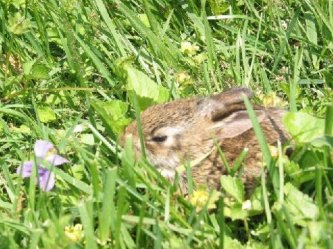 Cottontails are normally very timid, however, they will fiercely defend their kits. Adult cottontails are 14 to 16 inches long and weigh about 3 pounds. They are capable of jumping 8 feet. The average life span is 2 years. Only 25% of cottontails survive their first year. If all of the doe’s brood survived and reproduced, at the end of 5 years, there would be 2.5 billion rabbits. In an area where there is a high number of predators, 85% of the rabbit population will die in one year. Mortality is also affected by weather. The form may be flooded during a storm and the may result in the death of an entire litter.
Cottontails are normally very timid, however, they will fiercely defend their kits. Adult cottontails are 14 to 16 inches long and weigh about 3 pounds. They are capable of jumping 8 feet. The average life span is 2 years. Only 25% of cottontails survive their first year. If all of the doe’s brood survived and reproduced, at the end of 5 years, there would be 2.5 billion rabbits. In an area where there is a high number of predators, 85% of the rabbit population will die in one year. Mortality is also affected by weather. The form may be flooded during a storm and the may result in the death of an entire litter.
Rabbits sexually mature at 4 to 6 months. A doe may have 3 to 4 litters per year. The average litter size is 3 to 6. The doe returns to the nest twice a day to feed her kits. She will lay over the form and the kits will rise up to nurse. They lay on their backs and fill their stomachs quickly. Kits are born blind and hairless but in a short 3 weeks they will be weaned and eating on their own. By 4 weeks of age the kits will leave the nest for good.
Cottontails are a prey species. They are born knowing what they should do. When startled they will remain motionless for long periods of time or they will flee rapidly. (reprinted with permission from Wild at Heart)
Southern Flying Squirrel
(Glaucomy volans)
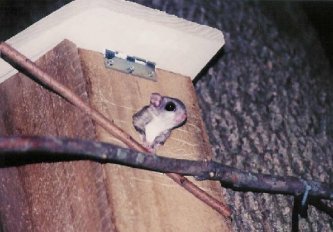 There are two species of flying squirrel in North America. They are the only strictly nocturnal squirrel in the New World. They are shy and infrequently seen but reside in an extensive portion of the continental United States. The southern flying squirrel is the species in the Tidewater area of Virginia.
There are two species of flying squirrel in North America. They are the only strictly nocturnal squirrel in the New World. They are shy and infrequently seen but reside in an extensive portion of the continental United States. The southern flying squirrel is the species in the Tidewater area of Virginia.
The most basic fact is that a flying squirrel does not fly. They would be more accurately named the gliding squirrel. A loose fold of skin called the patagium extends from the front ankle to the rear ankle. This fold of skin allows the flying squirrel to glide from tree to tree or limb to limb. It is a unique feature of this species. They are capable of controlling speed and direction with little effort. As they glide, they resemble a square pancake with head, legs and tail. On a familiar glide path, a flier will simply leap out and spread it’s patagium. It uses its powerful back legs to launch itself. The tail serves as a balance, similar to the tail of a kite. The distance a flying squirrel can glide will depend on the slope of the terrain, amount of wind and height the jump began. The distance of the glide will be about 3 feet of distance to each foot of height. Fliers can easily glide 200 feet. When it prepares to land, the squirrel drops its tail and raises its front paws, achieving the same effect as an airplane lowering its flaps. It maneuvers during the glide by moving its legs which thereby tighten or loosen the flaps of skin.
Flying squirrels use a variety of nest sites. A favorite is a tree cavity. Southern flying squirrels will build a summer nest of leaves, usually in hardwood trees , such as oak and hickory. They remain active all year long. In winter, large numbers will share the same cavity. The southern flying squirrel gives birth around April and may have a second litter in August. The litter size varies between 2 and 6 with the average being 3. Females are excellent mothers and will defend their young. Newborn are born naked with only a few whiskers and eyelids and ears are sealed shut. At 4 weeks fur completely covers the body and the upper incisors erupt. Around this time the eyes open. The baby flier is called a pup. At eight weeks the pups are weaned and are gliding and exploring independently.
The adult flying squirrel weighs only 4 ounces and from head to tip of tail is 8 to 10 inches. It is the smallest of the North American squirrels. The fur is extremely soft and fine and varies in color from dark brown to gray with a creamy white underside. The hairs of the tail are flat extend laterally, similar in appearance to a feather.
The flying squirrels eyes are adapted to its nocturnal life style. They are large, very dark and prominent-thus the genus name “glaucomus” . The name stems from the Greek word “glaukos” meaning bluish gray, probably because of the way their eyes reflect light.
They have an excellent sense of hearing. Vocalizations include chirps and twitters. They will make chirping and chittering sounds while gliding. When distressed, young fliers will make a high pitched rasping squeak, described as “tseets”, which is sometimes out of the range of human hearing. Southern flying squirrels are omnivores. Natural foods include lichens, nuts, bark, green tree buds, berries, moths, and slugs. The southern flying squirrel is considered the most carnivorous of all the tree squirrels. They will also eat nestling birds, bird’s eggs, carrion, baby mice and voles, and occasionally adult mice and shrews are killed and eaten by this beautiful little terror. They are more aggressive than their northern cousin.
Enemies of the southern flying squirrel include owls, bobcats, coyotes, foxes, skunks, weasels and snakes. Habitat destruction and domestic cats pose a serious threat to the flying squirrel. The average life span of wild fliers is 2 to 4 years. (reprinted with permission from Wild at Heart)


